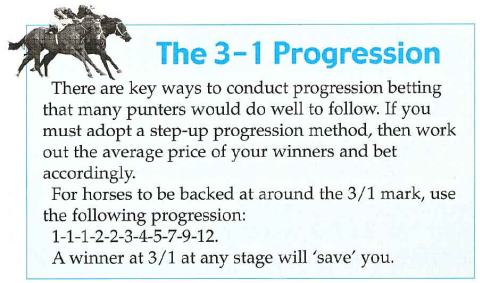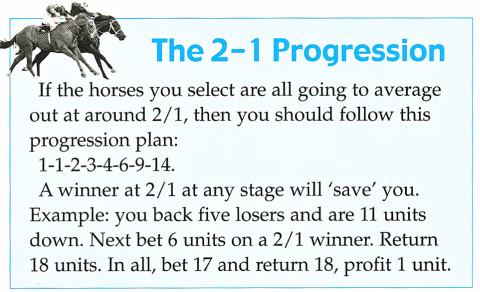Almost every day, here at PPM, we receive letters from readers who, in desperation, turn to us for advice on staking. Mostly, they are punters who have never gotten their heads around the fact that to be successful they need to know all about money management as well as form.
They have usually lost the battle to protect their capital. Unlike successful punters, and successful businessmen, these punters bet willy-nilly, declined to establish sensible principles, and paid the price, even though, in many instances, the winners they were able to back should have enabled them to make a profit.
The pro punter never allows himself to be placed in a position where he might be panicked into chasing losses, This is the difference between the losing amateur and the quietly successful professional.
Henry Tournier, a professional who made his money on the Sydney tracks in the 1950s, believed in sound staking principles. His aim was to build on success, not dramatically but with steady accumulation.
He used level stakes as the basis of his money management but added the 'bonus' of progression. He began with limited capital after selling his business (a fish and chips shop!) and built a fortune from his betting.
He preferred to bet for the place but was known to 'break out' and thump plenty on for the win if he thought he had the percentages in his favour.
But his great wealth came from place betting. Let me sum up his approach. It could well be what you are looking for to swing your own betting fortune around.
Start with a bank of, say, $200. The opening bet is 10 per cent. Each time your capital increases by $20 you advance your stake by $2, and 10 per cent of the new bank is your minimum investment.
Thus, at $220 your opening stake would be $22, at $240 it would be $24, and so on.
Henry Tournier, once he became established with plenty of capital, set himself three bank increases, after which he would start all over again.
Theoretically, this is what he did: With opening capital at $400, the lowest bet is $40, and the stake is increased $4 every time the capital increases by $40. The first target is $800.
On reaching it, he withdraws $200, then, with $600 (lowest bet $60 and a stake increase of $6 for every $60 won) he shoots to reach $1200. On gaining this objective, h takes out $300 and with the remaining $900 (lowest bet $90 and an increase of $9 every time $90 is won), he goes for the third plane of the objective, $1800.
On reaching this target, the series is ended and a new series starts anew with a bank of $400.
Every successful sequence gives him a nett profit of $1900.

As you can see, there's nothing fiendishly difficult about this approach. It has to be underpinned by confident tipping, but if you're betting for the place, then there should be no problems in that area.
There are any number of sound place bet propositions on any given day. Tournier was known for his accuracy in making the right selections. He confined his betting to races in which he considered there were no more than four definite chances.
Thus it was 3/1 ON that his selection would run a place. Not a bad approach, providing your summation of a race is correct most of the time.
Going through the cards for Saturday, February 26, I found I could zero in on several near-cert place prospects. Aunty Hilda (2nd) was one, Pins (1st) was another, Falvelon (2nd) looked a good thing for the place, as did Hire (1st) in Sydney.
The point about using a staking plan like the one I've outlined is that you know where you are going. You have a target and you have clear guidelines.
The systematic bettor maintains control of his capital and bets with a purpose. So long as he holds the reins, he has the opportunity of winning. This cannot be said of the haphazard punter who is never in command of his resources.
As a consequence, he is often caught in the switches and continually led into the error of betting the wrong way with the results going against him time and again. The worst story of all is that the punter ends up with the smallest bets on the winners and the largest bets on the losers.
Another interesting staking plan is where you start with a bank of 19 units. Then you always multiply the first figure of the bank total by 2 and this will give you the number of units to bet.
Thus, starting with 19 units, the first bet is 2 units. Between 20 and 29 units the bet is 2x2 equalling 4 units, between 30 and 39 the bet is 6 units (3x2), between 40 and 49 the best is 8 units (4x2), between 50 and 59 the bet is 10 units (5x2), and so on.
Never bet beyond the 10-unit mark. Instead, declare a profit for the series and begin a new series of bets.
A unit, of course, can be any amount of money you like, but you always think of the bank in units. Thus. if you were betting in $5 units, you'd need a bank of $95 (19 units at $5) but the bets would be determined using the 19 units figure.

One moot point to remember in picking your selections is that they must be STRONG chances. Try not to be too much of a risk-taker. This is not a form of betting in which to indulge whims and hunches. Back your judgement, by all means, but keep those 'hunch' bets for another betting attack.
It's always useful to note that about 80 per cent of all races are won by horses on the first four lines of betting. That is a significant statistic and should be pasted in your notebook!
Latest statistics show firstfavourites winning 31 per cent, second-favourites 23 per cent, third-favourites scoring 15 per cent and fourth-favourites winning 10 per cent of all races throughout Australia. That's 79 per cent of all races.
Once you move outside this 'safety zone' you are putting yourself on a horse that has the percentages against it. With place betting, the key points to remember are that the first two favourites between them win more than HALF of all races.
With this in mind, there is a good case to be made out for narrowing your selections for both win and place to the first two favourites. With place betting, there's a real edge working for you.
Combine this with the staking plans I've outlined and you will be in a strong position to start making decent profits without risking too much at all.
You'll need discipline, patience and lots of form analysis skills but the journey is very likely to be a most interesting one. Don't overbet on the same day, pick your spots with the utmost care, and always remember that you're in control and that you will progress step by step with each dividend you land.
By Philip Roy
PRACTICAL PUNTING - APRIL 2000